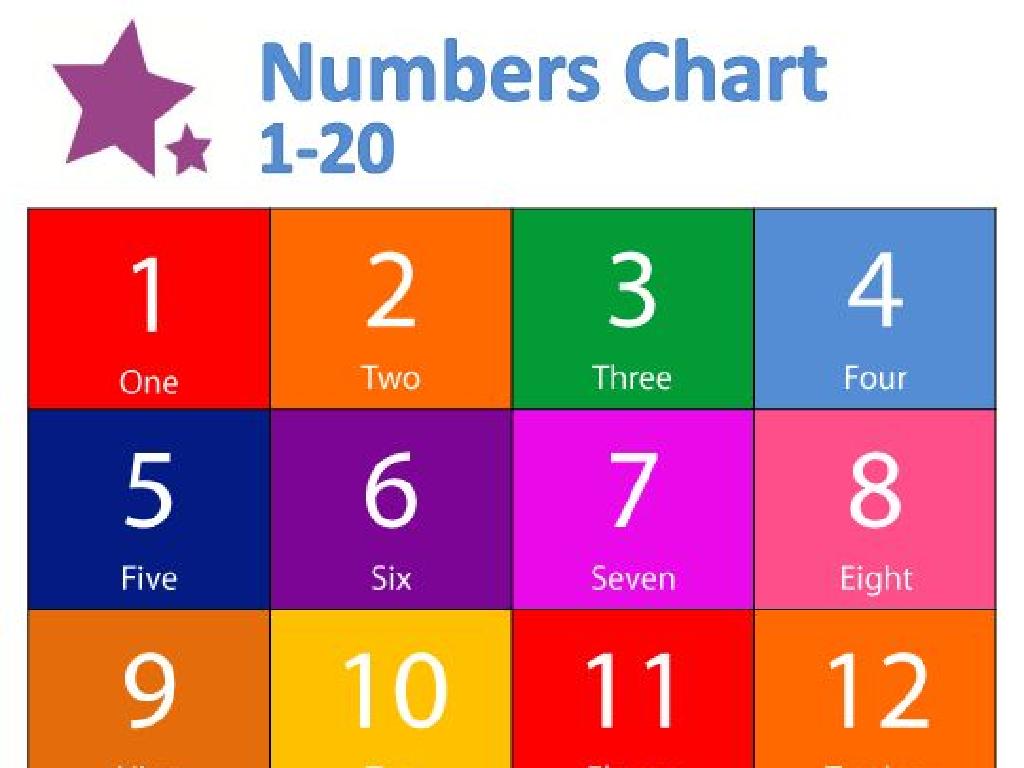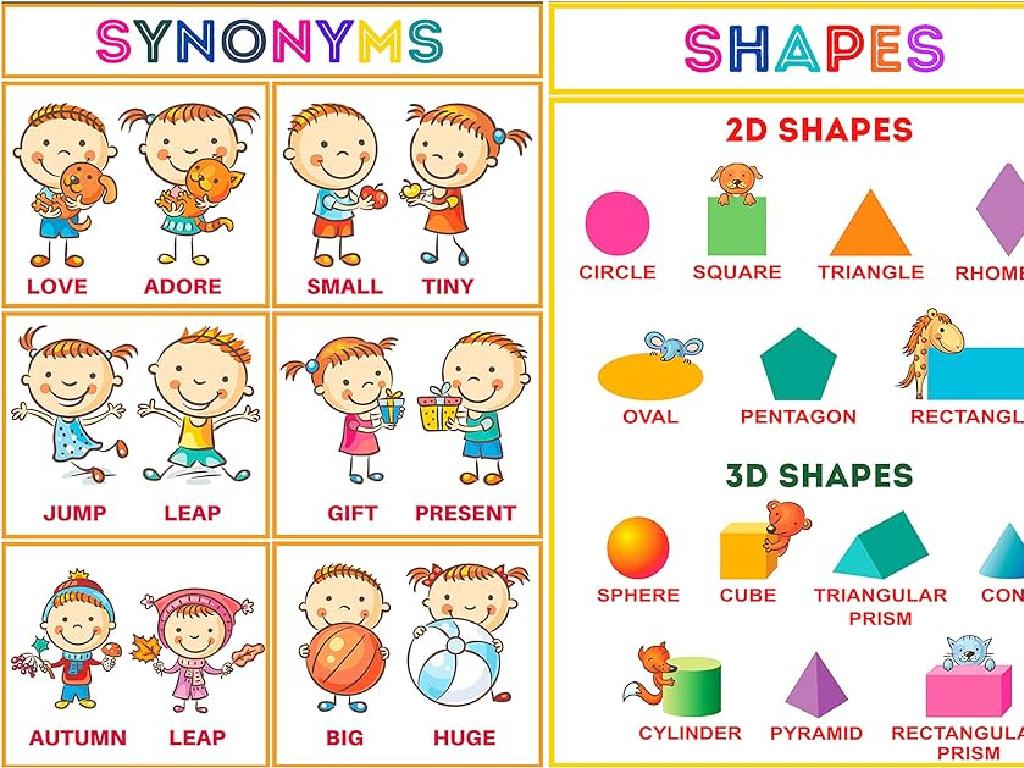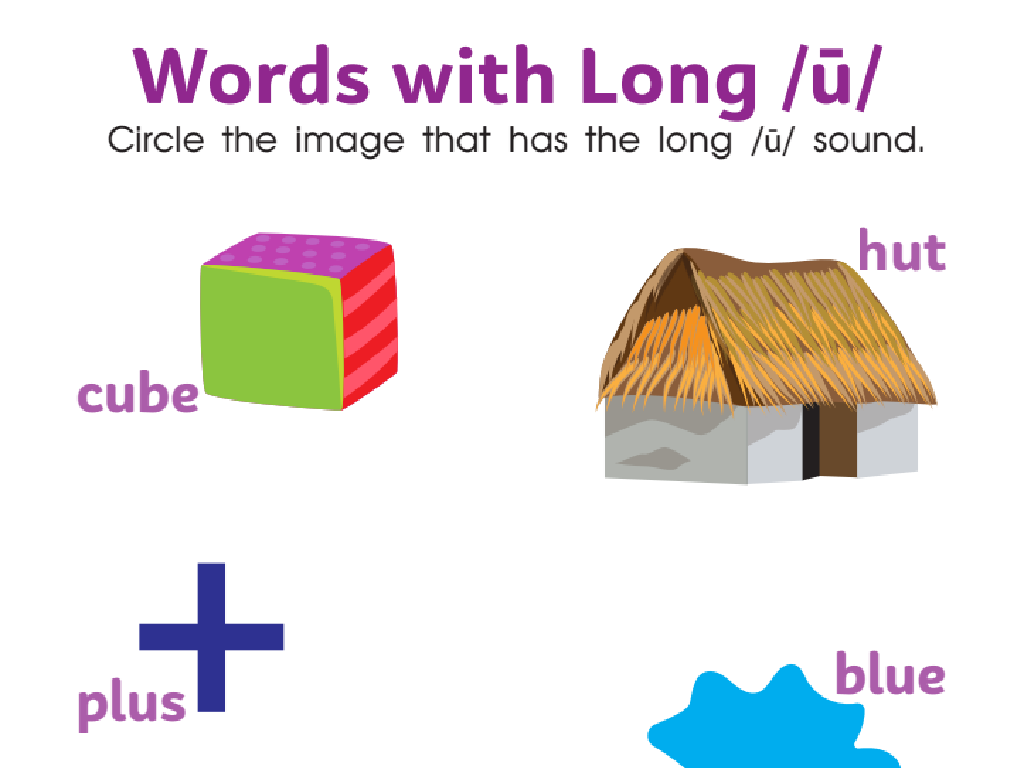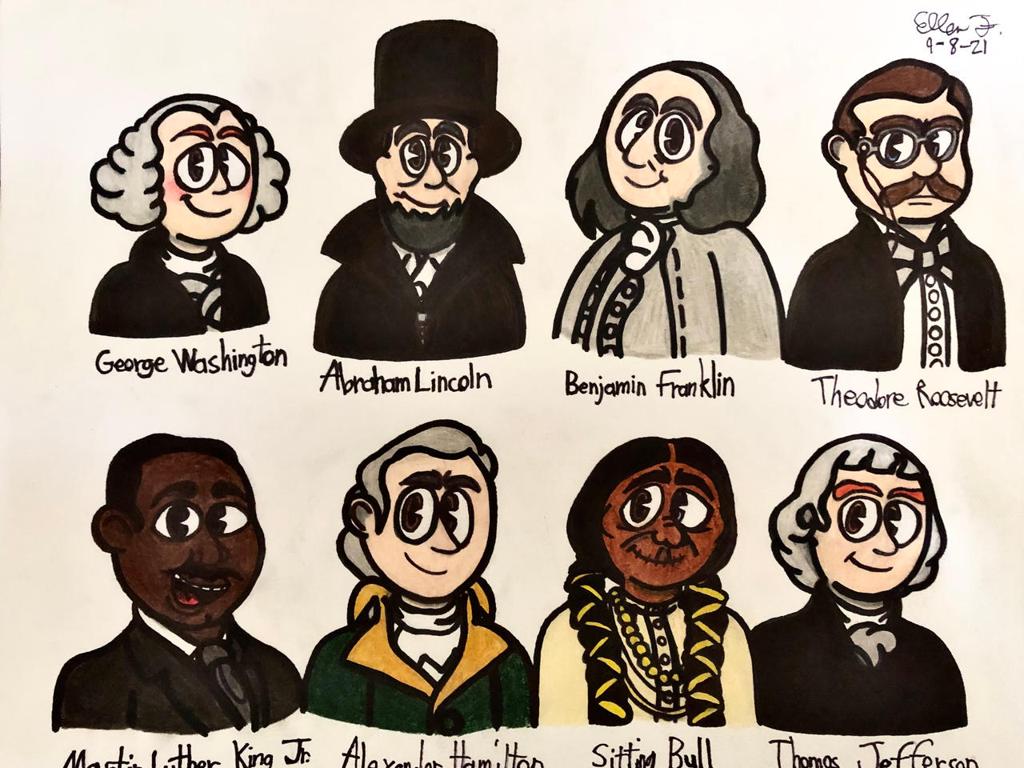Form And Use Comparative And Superlative Adjectives
Subject: Language arts
Grade: Eighth grade
Topic: Adjectives And Adverbs
Please LOG IN to download the presentation. Access is available to registered users only.
View More Content
Comparative and Superlative Adjectives
– Basics of adjectives and adverbs
– Adjectives describe nouns; adverbs describe verbs, adjectives, or other adverbs.
– Purpose of comparison
– Comparisons help us describe one thing in relation to another.
– Forming comparative adjectives
– Add ‘er’ to short adjectives or use ‘more’ for longer adjectives to compare two things.
– Forming superlative adjectives
– Add ‘est’ to short adjectives or use ‘most’ for longer adjectives to compare three or more things.
|
This slide introduces the concept of comparative and superlative adjectives within the broader topic of adjectives and adverbs. Begin by explaining the role of adjectives and adverbs in sentences. Emphasize the importance of comparison in everyday language to describe and differentiate objects, people, and ideas. Teach the rules for forming comparative adjectives when comparing two items (e.g., ‘taller’, ‘more interesting’) and superlative adjectives when comparing three or more items (e.g., ‘tallest’, ‘most interesting’). Provide examples for each and encourage students to think of their own examples. This foundational knowledge will help students enhance their descriptive writing skills.
Exploring Adjectives
– Adjectives describe nouns
– Words that give more details about nouns, like ‘happy dog’ or ‘blue sky’.
– Indicate size, shape, color
– They can describe physical properties like ‘tall building’ or ’round ball’.
– Examples: ‘big’, ‘circular’, ‘red’
– ‘Big’ describes size, ‘circular’ shape, ‘red’ color. More examples: ‘small’, ‘square’, ‘blue’.
|
This slide introduces the concept of adjectives to the students, explaining their role in providing more information about nouns. Emphasize that adjectives can describe various aspects of a noun, including its size, shape, color, and many other qualities. Provide clear examples for each category to ensure students can identify adjectives in sentences. Encourage students to think of additional adjectives and use them in sentences to describe objects around the classroom. This will help them understand how adjectives enhance language and make descriptions more vivid and precise.
Exploring Adverbs
– Adverbs modify verbs, adjectives, adverbs
– They answer how, when, where, why
– Examples: ‘quickly’, ‘yesterday’
– ‘He ran quickly’ shows how he ran
– ‘Very’ modifies adjectives/adverbs
– ‘Very’ intensifies: ‘very fast’, ‘very well’
|
This slide introduces the concept of adverbs to the students, explaining their role in a sentence. Adverbs are words that modify verbs, adjectives, and other adverbs, providing additional context such as how an action is performed, when it happened, where it took place, why it occurred, or to what extent. Examples like ‘quickly’ demonstrate adverbs modifying verbs, while ‘yesterday’ and ‘outside’ indicate time and place. The word ‘very’ is a special adverb that intensifies the meaning of an adjective or another adverb. Encourage students to come up with their own sentences using adverbs to describe actions vividly. This understanding will be crucial as they learn to compare actions using comparative and superlative adverbs in subsequent lessons.
Comparative Adjectives
– Compare two things with adjectives
– Like ‘big’ becomes ‘bigger’ when comparing two items
– Form with ‘-er’ or ‘more’
– ‘Happy’ becomes ‘happier’, but ‘beautiful’ becomes ‘more beautiful’
– Examples: ‘taller’, ‘more interesting’
– ‘Short’ turns into ‘shorter’, ‘intelligent’ to ‘more intelligent’
– Usage rules and exceptions
– Learn when to add ‘-er’ and when to use ‘more’ before the adjective
|
This slide introduces comparative adjectives, which are used to compare two distinct objects or people. Emphasize the basic rule of adding ‘-er’ to the end of short adjectives, such as ‘tall’ becoming ‘taller’. For longer adjectives, the word ‘more’ is placed in front, as in ‘more interesting’. Provide students with examples and engage them in identifying the correct form of comparative adjectives. Discuss exceptions to the rules and common mistakes to avoid. Encourage students to come up with their own examples and use them in sentences to reinforce their understanding.
Superlative Adjectives
– Comparing three or more items
– Use when discussing multiple items to show the extreme
– Forming with ‘-est’ or ‘most’
– Short adjectives take ‘-est’, longer ones use ‘most’
– Examples: ‘tallest’, ‘most interesting’
– ‘tallest’ from ‘tall’, ‘most interesting’ from ‘interesting’
– Usage in descriptive writing
|
This slide introduces the concept of superlative adjectives, which are used to compare three or more things and express the highest degree of a quality. Teach students the rule of thumb for forming superlatives: generally, one-syllable adjectives take the ‘-est’ suffix, while longer adjectives are preceded by ‘most’. Provide clear examples and encourage students to come up with their own. Discuss how superlative adjectives can enhance descriptive writing by allowing the writer to highlight the most notable qualities of subjects being compared.
Irregular Comparative and Superlative Adjectives
– Irregular adjectives change form
– ‘Good’ to ‘better’ to ‘best’
– Comparative ‘better’, superlative ‘best’
– ‘Bad’ to ‘worse’ to ‘worst’
– Comparative ‘worse’, superlative ‘worst’
– Practice with more examples
– Find and use irregular forms in sentences
|
This slide focuses on irregular adjectives, which do not follow the regular pattern of adding ‘-er’ or ‘-est’ to form their comparative and superlative degrees. Instead, these adjectives change their entire form. Provide students with examples such as ‘good’ to ‘better’ to ‘best’ and ‘bad’ to ‘worse’ to ‘worst’. Encourage students to think of other irregular adjectives and use them in sentences. Emphasize the importance of memorization and context in understanding and using these forms correctly. As an activity, students can work in pairs to come up with sentences using irregular adjectives or find examples in reading materials.
Using Comparatives and Superlatives
– Forming comparative adjectives
– Add ‘er’ to short adjectives or use ‘more’ for longer adjectives
– Forming superlative adjectives
– Add ‘est’ to short adjectives or use ‘most’ for longer adjectives
– Comparative example in a sentence
– ‘She is taller than her brother’ shows a direct comparison
– Superlative example in a sentence
– ‘He is the tallest in the class’ indicates the highest degree of a trait
|
This slide aims to teach students how to correctly form and use comparative and superlative adjectives in sentences. Comparatives are used to compare two things, typically formed by adding ‘er’ to the end of short adjectives or using ‘more’ before longer adjectives. Superlatives express the highest degree of something within a group or more than two things, formed by adding ‘est’ to short adjectives or ‘most’ before longer adjectives. Provide clear examples to illustrate the use of both forms in sentences. Encourage students to create their own sentences using adjectives from their vocabulary lists and to identify comparatives and superlatives in texts they read.
Let’s Practice Comparative & Superlative Adjectives!
– Identify adjectives and adverbs
– Create sentences with comparative adjectives
– Use ‘er’ for comparing two things, like ‘faster’
– Create sentences with superlative adjectives
– Use ‘est’ for comparing more than two, like ‘fastest’
– Share your sentences in class
|
This slide is designed for a class activity to reinforce the lesson on comparative and superlative adjectives. Students will begin by identifying adjectives and adverbs in given sentences to ensure they understand the difference between the two. Next, they will create their own sentences using comparative adjectives to compare two items and superlative adjectives to compare three or more items. Encourage creativity and proper usage of the adjectives. Finally, students will share their sentences with the class, which will help them practice speaking skills and allow for peer learning. Possible activities: 1) Pair students to compare their sentences and provide feedback. 2) Create a worksheet with sentences missing adjectives and have students fill them in. 3) Have a competition to see who can come up with the most original comparative and superlative sentences. 4) Ask students to find examples of comparative and superlative adjectives in a book they are reading.
Class Activity: Adjective Challenge
– Group noun adjective brainstorm
– Create comparative and superlative forms
– For ‘fast’: faster, fastest
– Craft creative sentences
– ‘The faster runner won the race’ or ‘The fastest car on the track’
– Share with the class
|
Divide the class into small groups and assign each group a different noun. Each group should list as many adjectives as they can that describe their noun. Then, they will form the comparative and superlative degrees of those adjectives. Encourage creativity in constructing sentences that use these forms. Possible activities: 1) Have groups exchange lists and create sentences with the other group’s adjectives. 2) Create a friendly competition for the most adjectives found. 3) Use a timer to make it a fast-paced challenge. 4) Ask students to illustrate their sentences. 5) Have a gallery walk where students can see other groups’ work.
Wrapping Up: Comparative & Superlative Adjectives
– Recap of today’s lesson
– Significance of correct adjective forms
– Homework: Craft a short story
– Use your imagination to write an engaging tale
– Include 10 comparative & superlative adjectives
– Ensure to incorporate at least 10 examples of the adjectives we’ve discussed
|
As we conclude today’s lesson, it’s crucial to review the key points about comparative and superlative adjectives. Emphasize the importance of choosing the correct form to make accurate and clear comparisons. For homework, students are tasked with writing a short story that includes at least 10 different comparative and superlative adjectives. This will help them apply what they’ve learned in a creative context. Encourage them to think about characters, settings, or objects they can compare in their stories. Provide examples like ‘faster’ or ‘the fastest’ to get them started. This exercise will reinforce their understanding and usage of these adjectives in writing.






